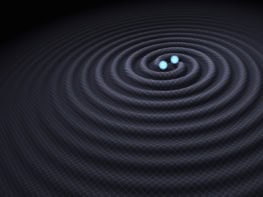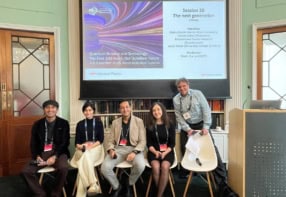The Arecibo Observatory’s “uniquely powerful electromagnetic radiation environment” is the most likely initial cause of its destruction and collapse in December 2020. That’s according to a new report by the National Academies of Sciences, Engineering, and Medicine, which states that failure of zinc in the cables that held the telescope’s main platform led to it falling onto the huge 305 m reflector dish – causing catastrophic damage.
While previous studies of the iconic telescope’s collapse had identified the deformation of zinc inside the cable sockets, other reasons were also put forward. They included poor workmanship and the effects of hurricane Maria, which hit the area in 2017. It subjected the telescope’s cables to the highest structural stress they had ever endured since the instrument opened in 1963.
Inspections after the hurricane showed some evidence of cable slippage. Yet these investigations, the report says, failed to note several failure patterns and did not provide plausible explanations for most of them. In addition, photos taken in 2019 gave “a clear indication of major socket deterioration”, but no further investigation followed.
The eight-strong committee, chaired by Roger McCarthy of the US firm McCarthy Engineering, that wrote the report found that move surprising. “The lack of documented concern from the contracted engineers about the inconsequentiality of cable pullouts or the safety factors between Hurricane Maria in 2017 and the failure is alarming,” they say.
Further research
The report concludes that the root cause of the catastrophe was linked to the zinc sockets, which suffered “unprecedented and accelerated long-term creep-induced failure”. Metallic creep – the slow, permanent deformation of a metal – is caused by stress and exacerbated by heat, making components based on the metal to fail. “Each failure involved both the rupture of some of the cable’s wires and a deformation of the socket’s zinc, and is therefore the failure of a cable-socket assembly,” the report notes. How the Arecibo Observatory created a scientific legacy for Puerto Rico
As to the cause of the creep, the committee sees the telescope’s radiation environment as “the only hypothesis that…provides a plausible but unprovable answer”. The committee proposes that the telescope’s powerful transmitters induced electrical currents in the cables and sockets, potentially causing “long-term, low-current electroplasticity” in the zinc. The increased induced plasticity accelerated the natural ongoing creep in the zinc.
The report adds that the collapse of the platform is the first documented zinc-induced creep failure, despite the metal being used in such a way for over a century. The committee now recommends that the National Science Foundation (NSF), which oversees Arecibo, offer the remaining socket and cable sections to the research community for further analysis on the “large-diameter wire connections, the long-term creep behavior of zinc spelter connections, and [the] materials science”.
- Meanwhile, the NSF had planned to reopen the telescope site as an educational center later this month but that has now be delayed until next year to coincide with the NSF’s 75th anniversary.



